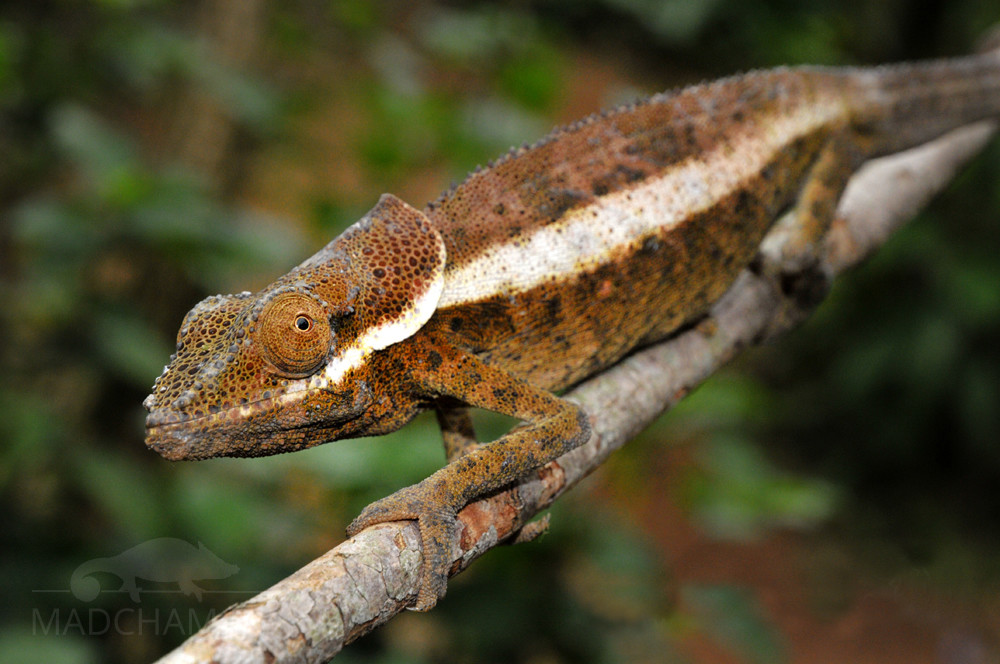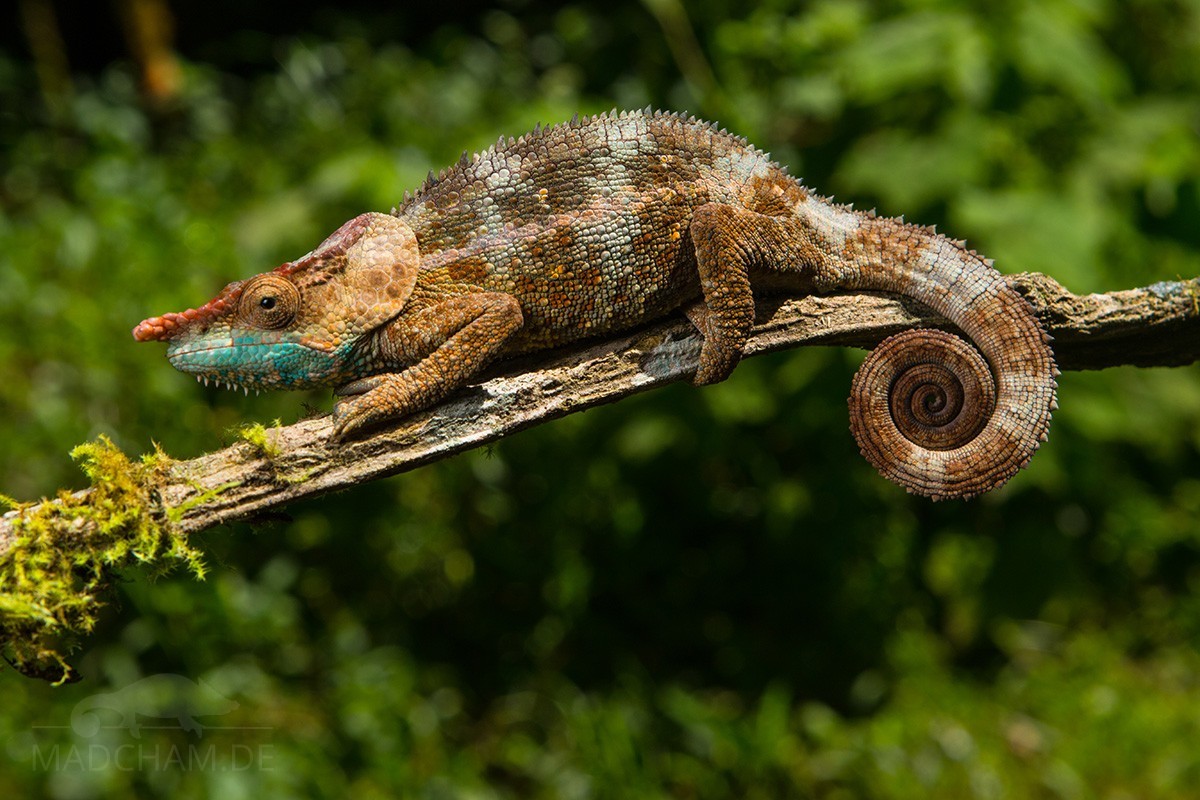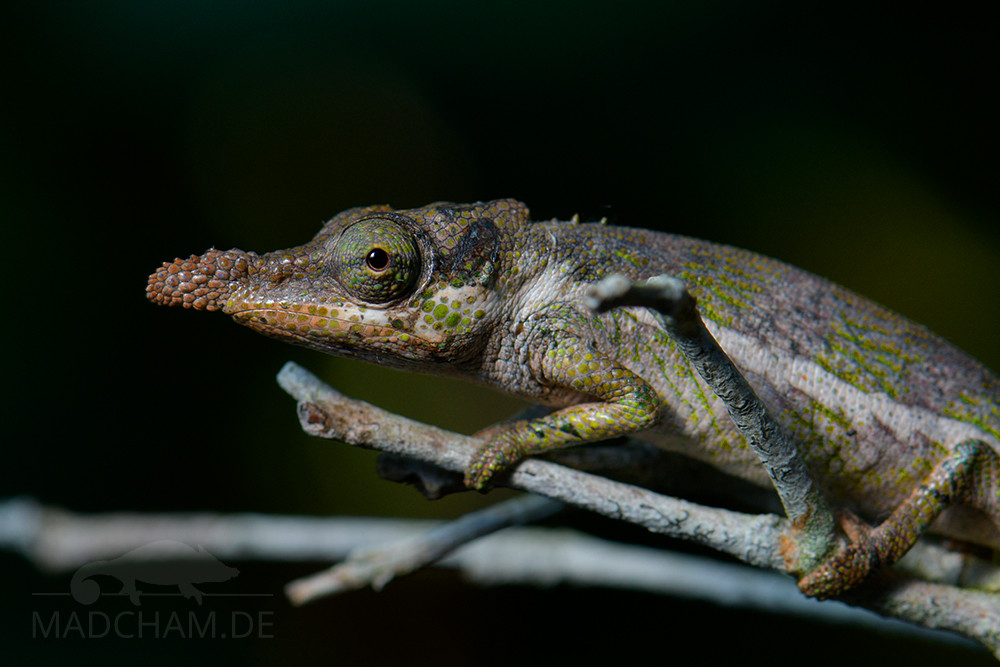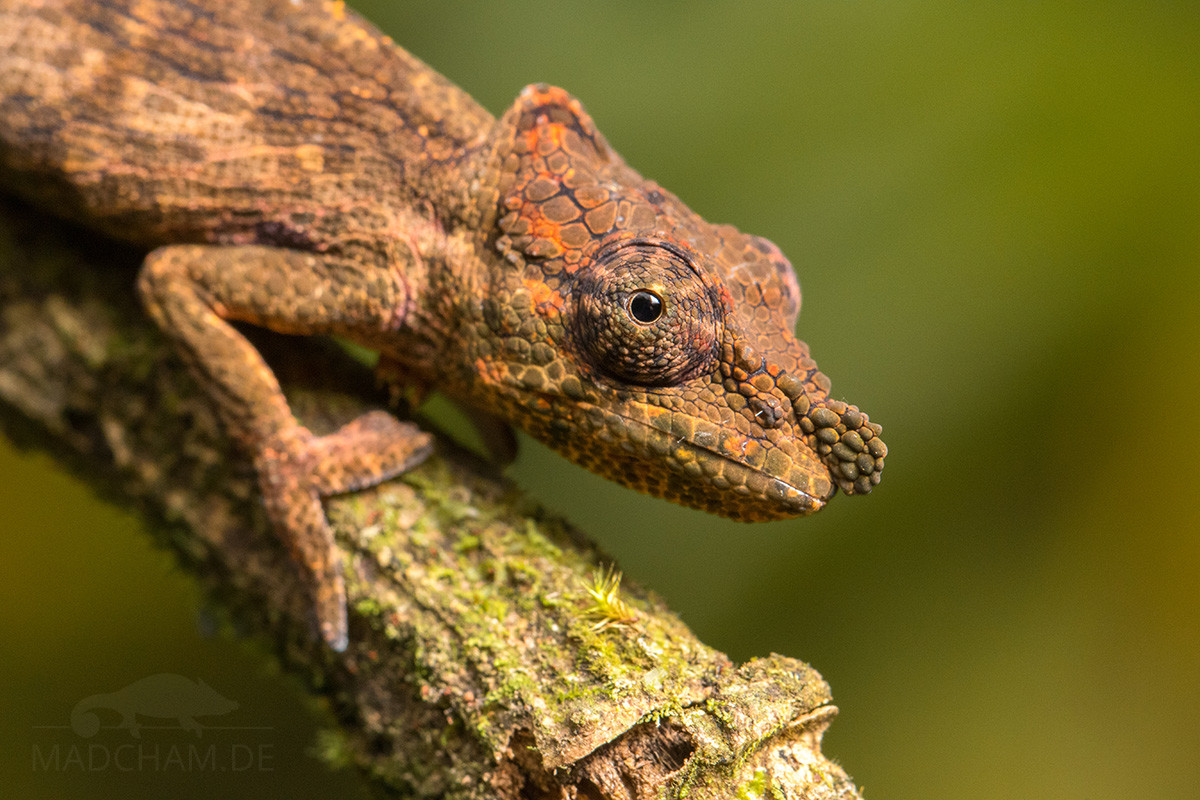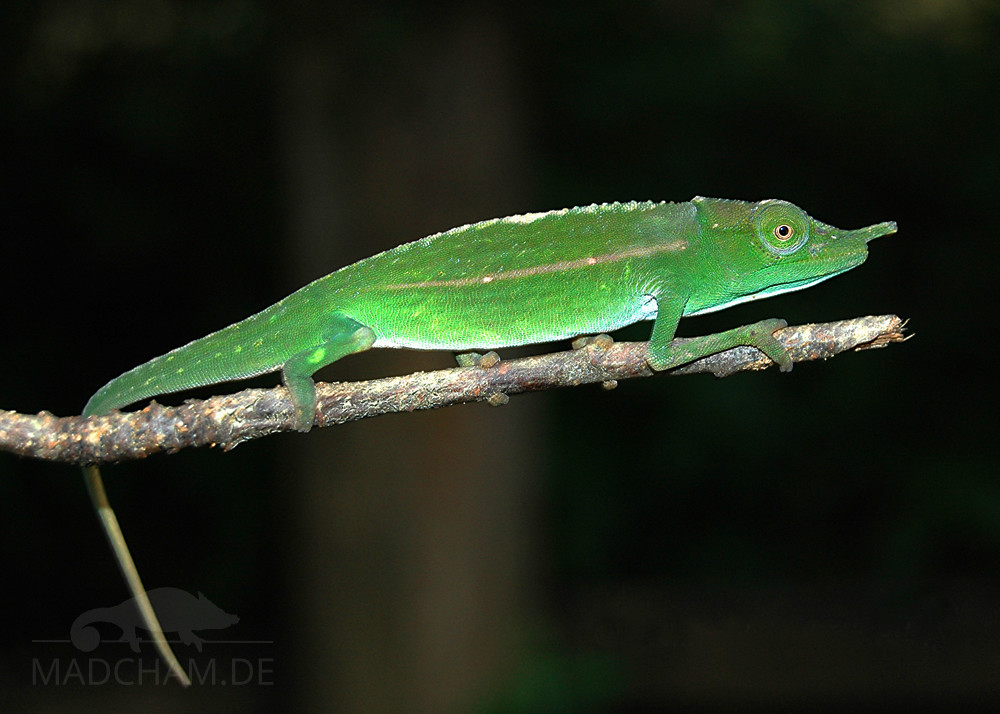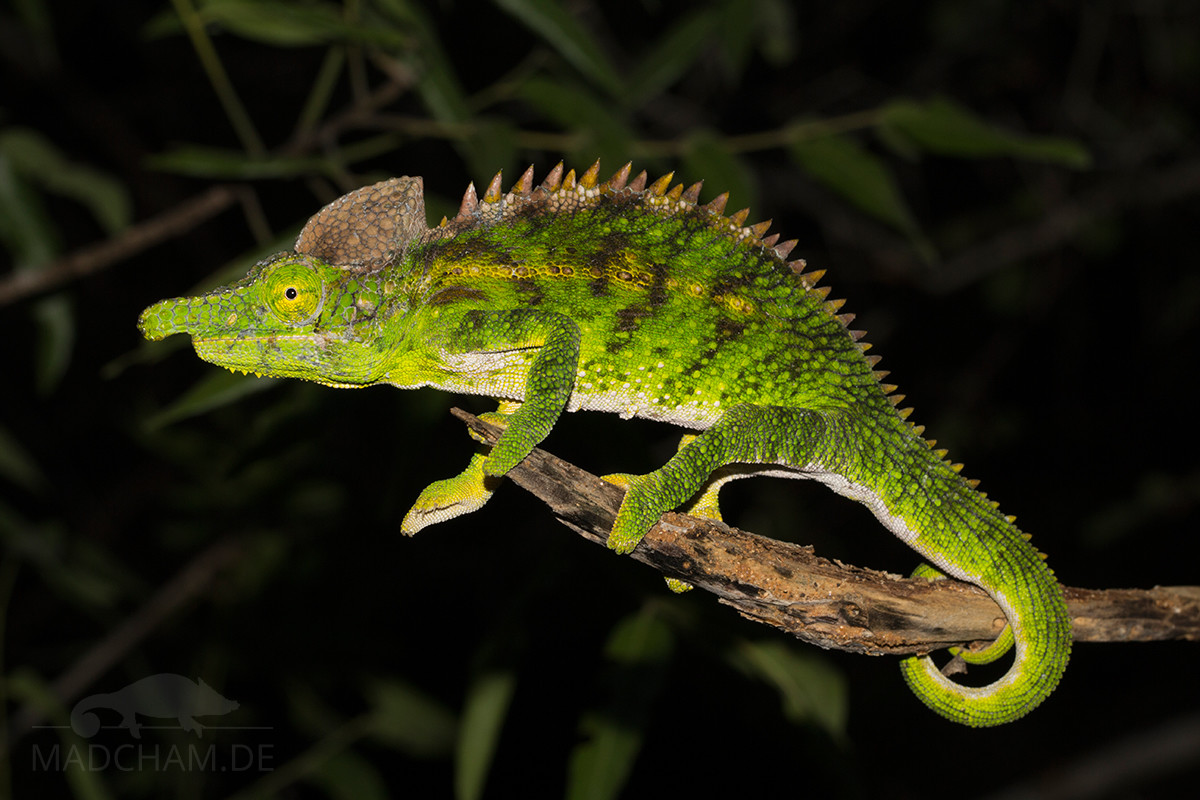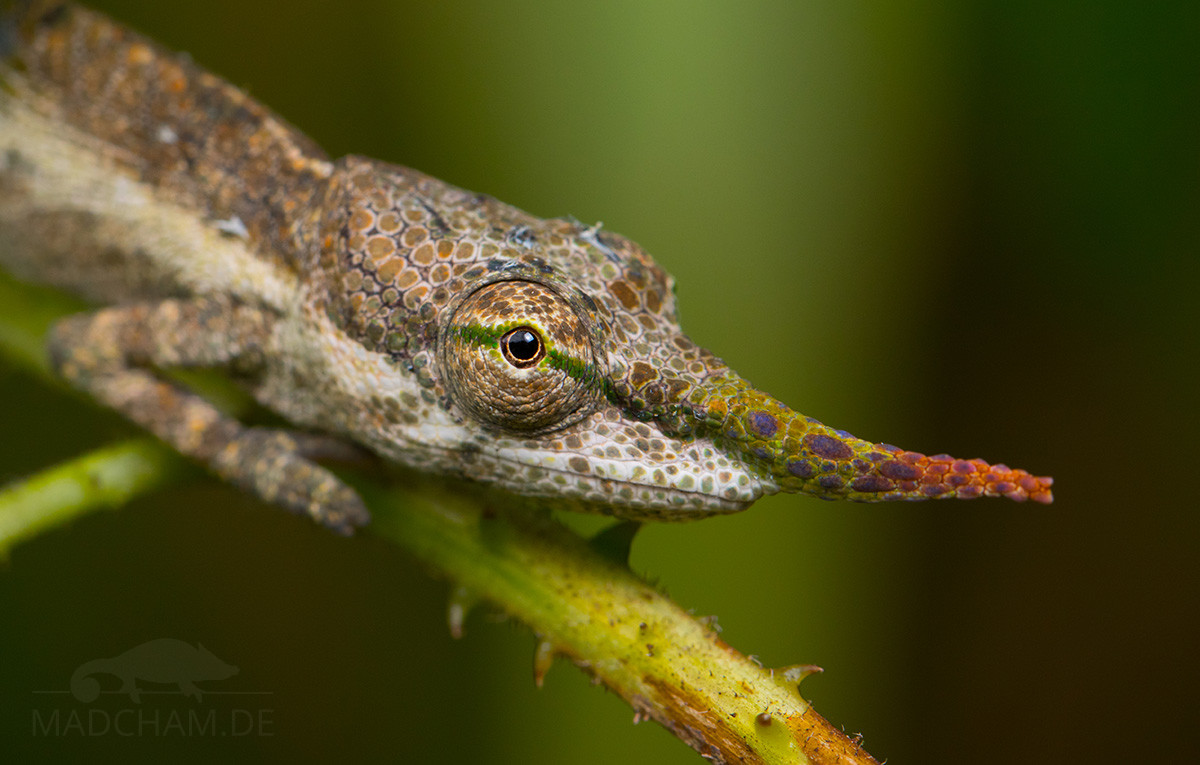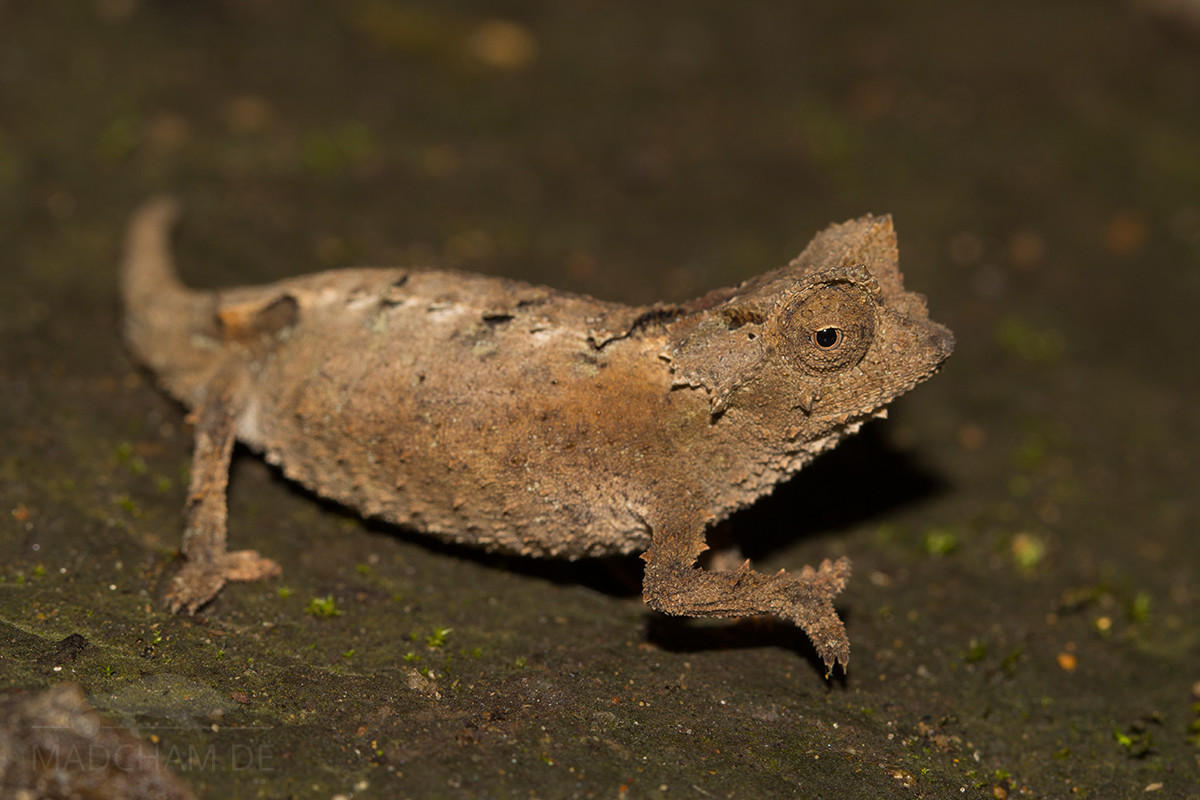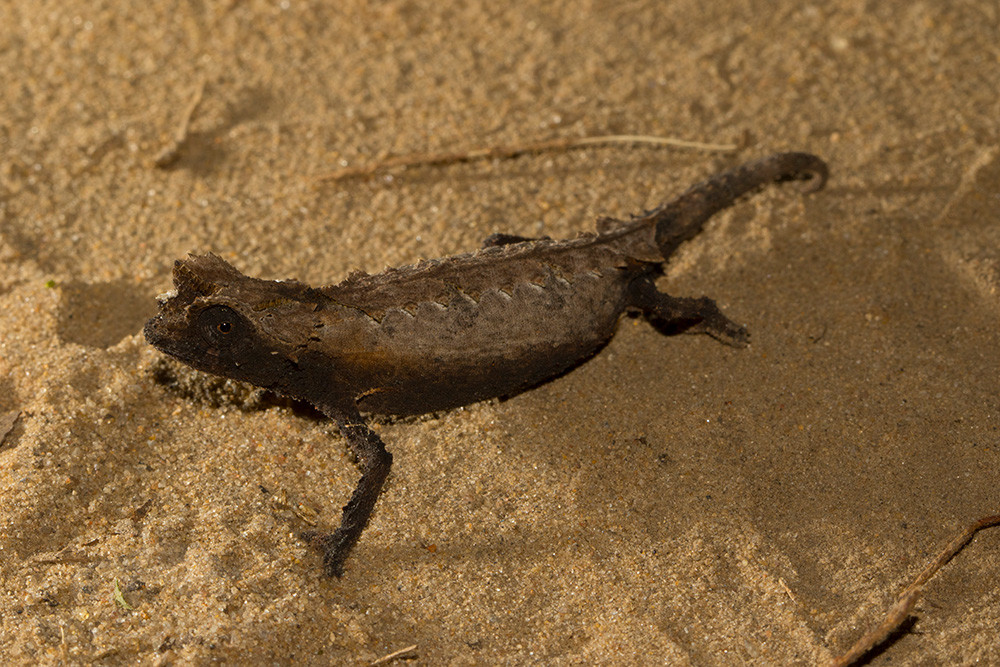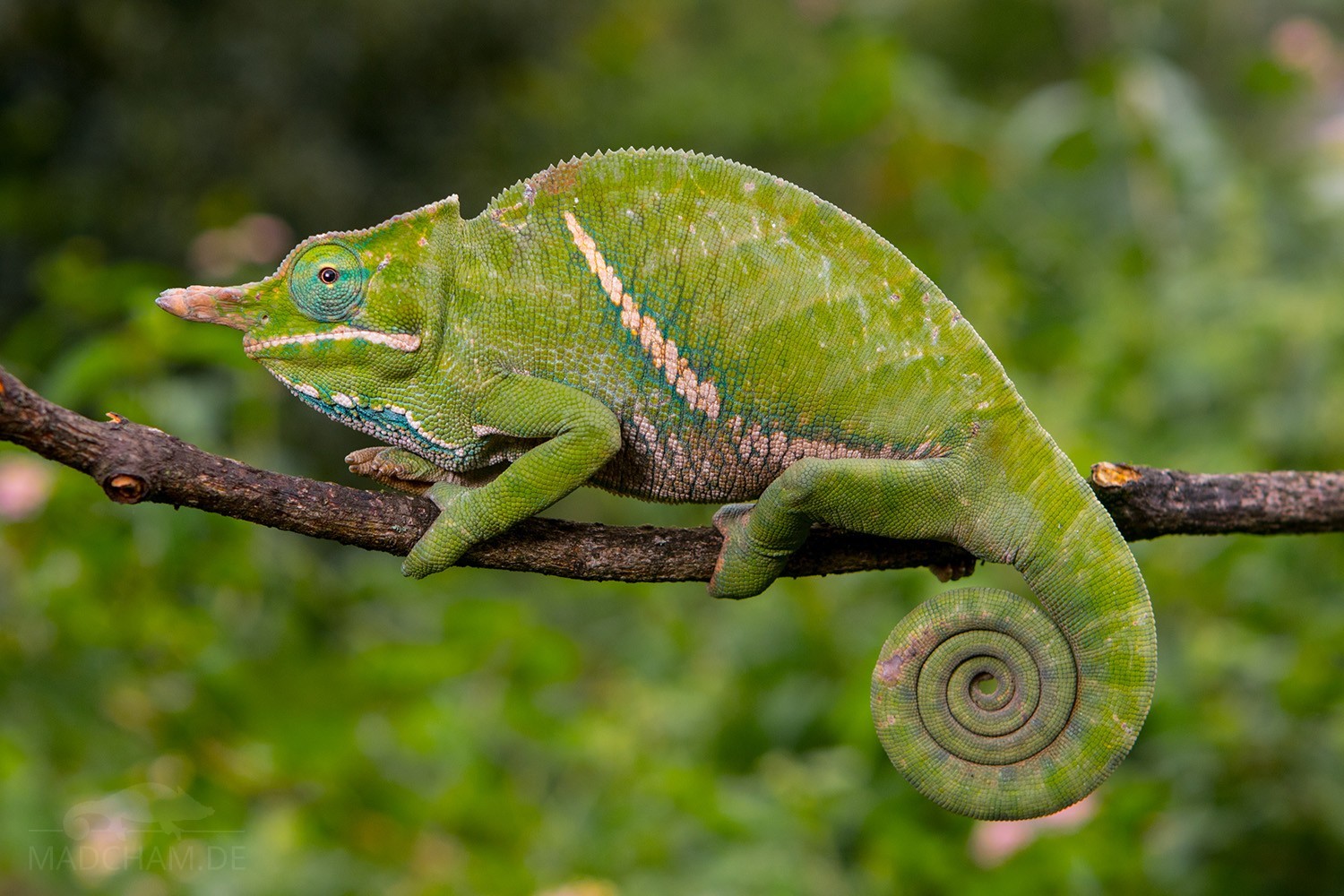Calumma cucullatum
First description: (Gray, 1831) Origin of the species name: The English zoologist John Edward Gray was very brief in his description of this chameleon species: it consists of just keywords instead of a coherent...
Calumma crypticum
First description: Raxworthy & Nussbaum, 2006 Origin of the species name: Christopher J. Raxworthy from the American Museum of Natural History, New York (USA) and Ronald A. Nussbaum from the University of Michigan, Ann...
Calumma emelinae
First description: Prötzel, Scherz, Ratsoavina, Vences & Glaw, 2020 Origin of the species name: David Prötzel, Mark D. Scherz and Frank Glaw from the State Zoological Collection Munich (Germany), Fanomezana M. Ratsoavina from the...
Calumma fallax
First description: (Mocquard, 1900) Origin of the species name: The zoologist François Mocquard of the Natural History Museum in Paris (France) borrowed the species name from the Latin fallax, which means “deceptive” or “misleading”....
Calumma furcifer
First description: (Vaillant & Grandidier, 1880) Origin of the species name: The French zoologists Léon Louis Vaillant and Guillaume Grandidier worked together in the French Zoological Society on various publications. They named this chameleon...
Furcifer antimena
First description: (Grandidier, 1872) Origin of the species name: The French naturalist Alfred Grandidier visited Madagascar three times between 1865 and 1868, traveling almost the entire island and producing one of the first maps...
Calumma gallus
First description: (Günther, 1877) Origin of the species name: The German zoologist Albert Carl Ludwig Gotthilf Günther, then Director of the Zoological Department of the Natural History Museum of London (Great Britain), described this...
Brookesia brunoi
First description: Crottini, Miralles, Glaw, Harris, Lima & Vences, 2012 Origin of the species name: Angelica Crottini from the University of Porto (Portugal) named this chameleon after her partner Bruno Grassi. In addition, the...
Brookesia brygooi
First description: Raxworthy & Nussbaum, 1995 Origin of the species name: Christopher J. Raxworthy from the American Museum of Natural History, New York (USA) and Ronald A. Nussbaum from the University of Michigan, Ann...
Furcifer balteatus
First description: (Duméril & Bibron, 1851) Origin of the species name: The zoologist André Marie Constant Duméril, then head of herpetology at the Natural History Museum of Paris (France), together with his assistant Gabriel...

